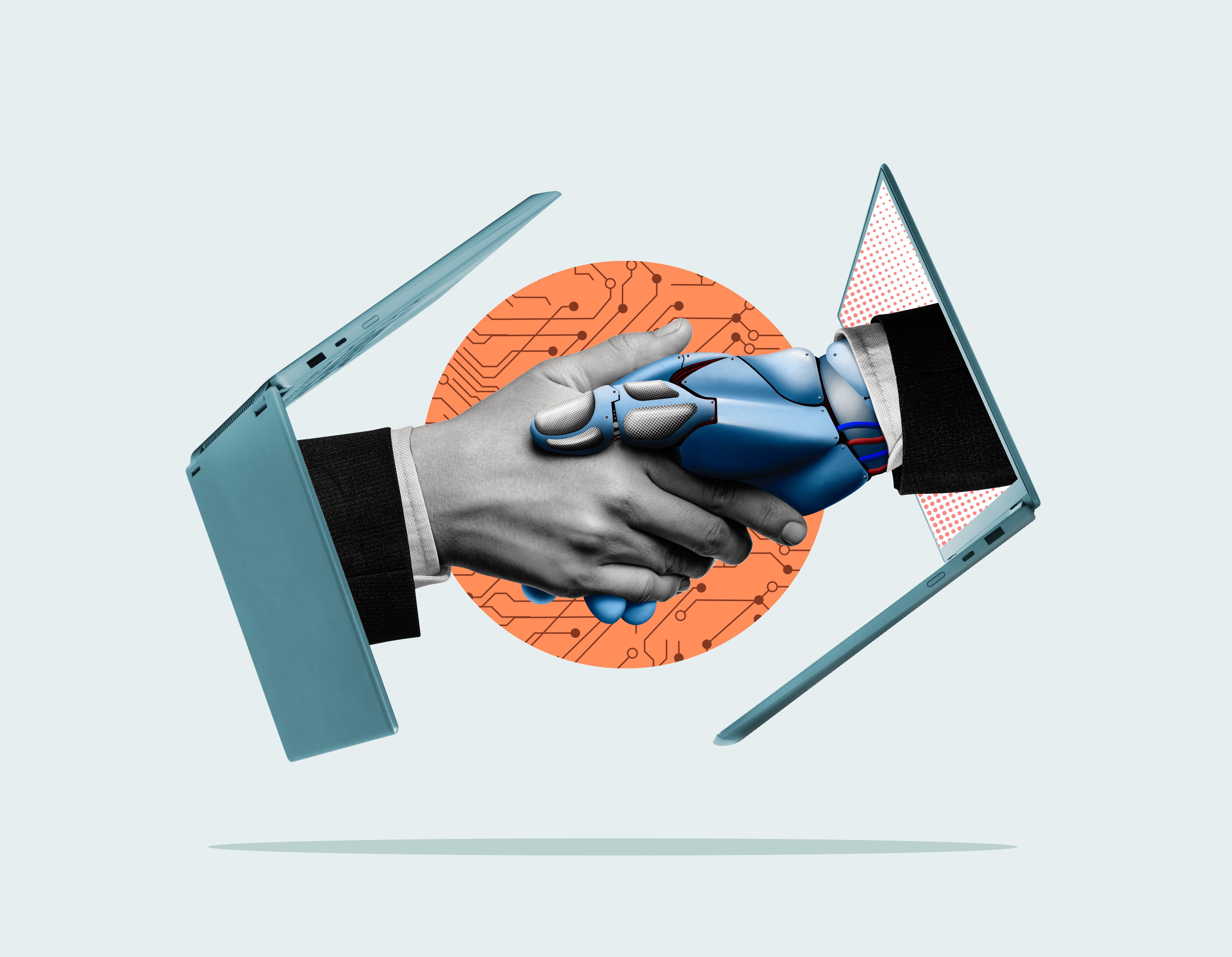
Positioning in the AI Era: Why Professional Services Firms Can't Outsource Brand
 Chip LaFleur
·
5 minute read
Chip LaFleur
·
5 minute read
It may be hard to imagine, but it's already happening. Your prospective clients may be finding you without ever clicking into your website.
If it hasn't happened yet, it will soon. In 2026 and beyond, prospective clients may simply ask ChatGPT, Gemini, Copilot, or Claude and get an answer that either mentions your firm or ignores you entirely. The difference between being named and being invisible often comes down to how intentionally you embed brand and identity into your content, tools, and positioning.
We'll discuss why recent platform moves make your brand architecture non-optional, how PI and service firms should respond, and how LaFleur helps firms cement themselves as named authorities in the age of generative and agentic AI.
Why Traditional Marketing Doesn't Cut It Anymore
Historically, a law firm might rely on:
- SEO to rank in search results
- Organic content to build trust and traffic
- Paid ads to push visibility
- Social and PR to amplify reputation
Brand was largely aesthetic and relational. But AI platforms are breaking that model:
- Search is no longer just about results. It's answers. AI Overviews, chat layers, and agentic summaries are displacing click lists. Many queries resolve without any click.
- Agents will navigate and compose narratives, not just aggregate. That means your content may be boiled down, credited or not, or consumed purely through an AI lens.
- Your tools can become touchpoints. With app SDKs in ChatGPT, your firm's logic, calculators, Q&A modules, and case estimators might run inside the AI environment.
- Visual and multimodal identity matters. As AI expands beyond text, your branding must be present across every dimension.
Ultimately, you need to build brand resilience. Forge an identity that survives compression, abstraction, and reassembly by AI.
What the Recent OpenAI Moves Teach Us
Recent platform moves underscore the demands on positioning.
ChatGPT apps SDK: Brand plus function together
By allowing apps to operate inside ChatGPT, your firm's estimator, triage tool, or content modules may be callable by users directly in that interface. If your brand is tied to a functional tool the AI can call, you don't wait for the user to scroll or click. You're part of the path. Firms that ignore embedding become background noise.
Agents, multimodal growth, and developer kits
OpenAI's emphasis on agents, interactions, multimodal output, and developer toolkits means content alone is no longer enough. Your brand must be present in logic, visuals, modules, and API endpoints. Agents will stitch together narrative fragments. You want your fragments to carry your identity.
Scale and surfacing signals
As platforms scale, they will use stronger heuristics to prioritize which content, modules, or brands to surface. You will be filtered out if your signals are weak.
What This Means for PI and Professional Services Positioning
These shifts amplify challenges for legal and professional firms, but they also open opportunities for firms that act deliberately.
Your identity must be hardwired throughout your offerings
Because AI compresses, abstracts, and rephrases, your identity must be planted at every level:
- In headings and subheadings
- In schema, metadata, and models
- In module names, function endpoints, and widgets
- In visual intros and voice intros
If your brand is only present at the footer or sidebar, agents may never carry it along.
Niche, local anchoring becomes a differentiator
When AI must choose which legal content to prescribe, context matters. "Detroit car accident firm" is stronger than "personal injury attorney." Jurisdiction, local statutes, venue, municipal references, and case outcomes are differentiators AI can latch onto to validate attribution.
Metrics must evolve: AI visibility is a KPI
Clicks and impressions are legacy metrics. You must now track:
- For targeted queries, which AI platforms mention your firm
- Whether snippet text attributes your firm
- Which agent-driven answers route through your modules or tools
- How AI visibility correlates to inbound leads over time
If your brand isn't in the snippet, you've lost before the click.
Tools, widgets, and embedded modules are new assets
Every functional interaction (calculator, estimator, or form assistant) is an opportunity to embed your brand. If your widget surfaces in a "legal helper," your brand becomes a native part of discovery instead of just a backlink.
Consistency across all touchpoints is crucial
Agents look across LinkedIn, directory bios, the press, your site, and module names. Inconsistency invites omission or misattribution. Uniform naming, taglines, specializations, and jurisdiction identifiers must be consistent across every public profile.
Your Tactical Roadmap: Embed Brand, Reclaim Visibility
Here’s a sample playbook to strengthen positioning and brand resilience.
First 30 days: Audit and tactical retrofit
- Query audit: pick 20 to 30 high-intent queries and run them in ChatGPT, Gemini, and Claude. Note which produce summaries and whether your firm appears.
- Page retrofit: inject identity early into top pages. Use headings that include firm plus jurisdiction. Add FAQs with your name.
- Schema and structured data: add LegalService, Organization, FAQ, and Q&A schema. Use structures agents can parse.
- External profiles sync: ****ensure consistency in LinkedIn, directory bios, bar sites, and partner pages.
- Baseline AI visibility tracking: log query, engine, citing behavior, and snippet text.
30 to 90 days: Embed brand in tools and content
- Create callable modules: calculators, triage tools, and Q&A flows. Expose via site and API.
- Publish modular, structured content: FAQs, bullet summaries, and micro-snippets designed for stitching by agents.
- Include local commentary: ****publish analyses of local cases, court opinions, and legal changes.
- Earn external citations: guest articles, local media, and legal journals to signal domain credibility.
- Monitor and correct misattribution: file corrections when AI cites the wrong source.
90+ days: Scale, iterate, and adapt
- Re-test priority queries on all major AI engines.
- A/B test branding intensity in content and module names.
- Prepare for model updates by testing whether brand signals survive each new model version.
- Expand into adjacent niches using the same architecture.
- Evolve brand architecture to include module ecosystems, attribution strategies, partnerships, and brand pathing.
Case Hypothetical: Two PI Firms, One Winner in AI Visibility
Firm Alpha builds a guide titled "Michigan Auto Injury Claims." It mentions "our firm" once in a boilerplate bio with no structured metadata, jurisdiction terms in headings, or tools.
Firm Beta publishes "Detroit Car Crash Claim Help: Beta Law Group." It opens: "Beta Law Group in Detroit helps car crash victims file injury claims under Michigan law." Headings include "Step 1: Contact Beta Law Group" and "Michigan statute overview." The page has schema, a claim estimator widget, and alt text referencing Beta Law.
When someone asks, "What to do after a car crash in Detroit?", an AI answer may say:
After a crash, victims should get medical attention, document the scene, and contact legal help. According to Beta Law Group in Detroit, Michigan's statute of limitations is 3 years. They offer a free claim estimation tool.
Beta Law is in the snippet. Firm Alpha is invisible. The difference is positioning and brand engineered into the content and modules.

Maintain SEO, But Build Brand Architecture for Agents
Keep optimizing keywords, backlinks, and content. That's baseline.
But to win in 2025 and beyond, you also need brand architecture: identity built into your content, modules, metadata, external profiles, and tools. That architecture survives compression, filtering, agentic reassembly, and snippet condensation.
SEO is table stakes. Brand architecture is your moat.
How LaFleur Helps You Be the Named Brand in AI
You don't have to transform your strategy alone. LaFleur helps professional services and PI firms adapt to these shifts. Our AI Visibility and Brand Architecture Program includes:
- Auditing how AI engines currently see your firm
- Identifying branding gaps and misrepresentations
- Redesigning content architecture to survive agentic summarization
- Building callable modules aligned to your brand
- Monitoring and iterative optimization across model updates
- Training your team in brand-forward positioning in the AI era
If you want your firm to be named and not ignored in AI summaries, reach out. Let's embed your brand beyond your website and into the AI fabric.

